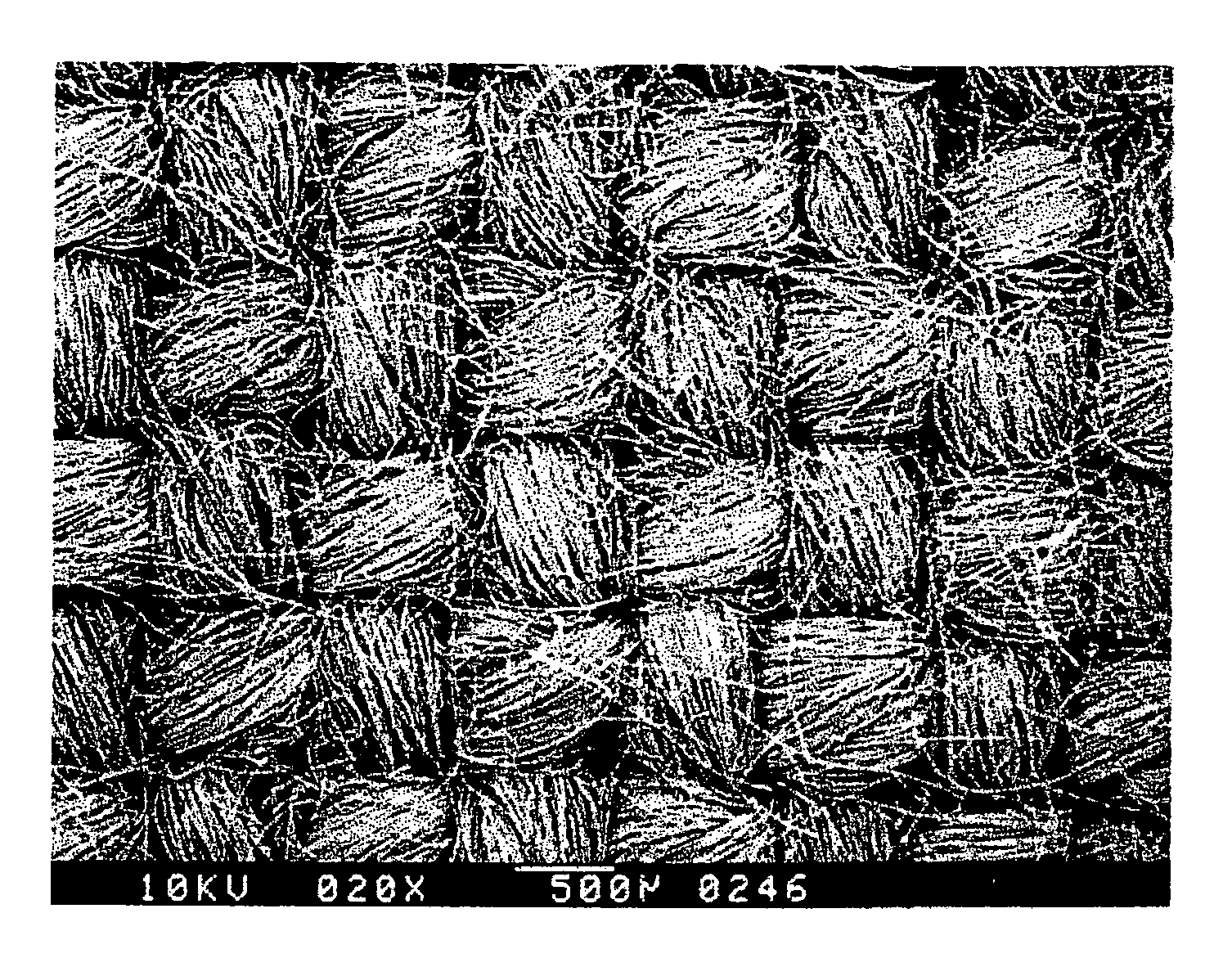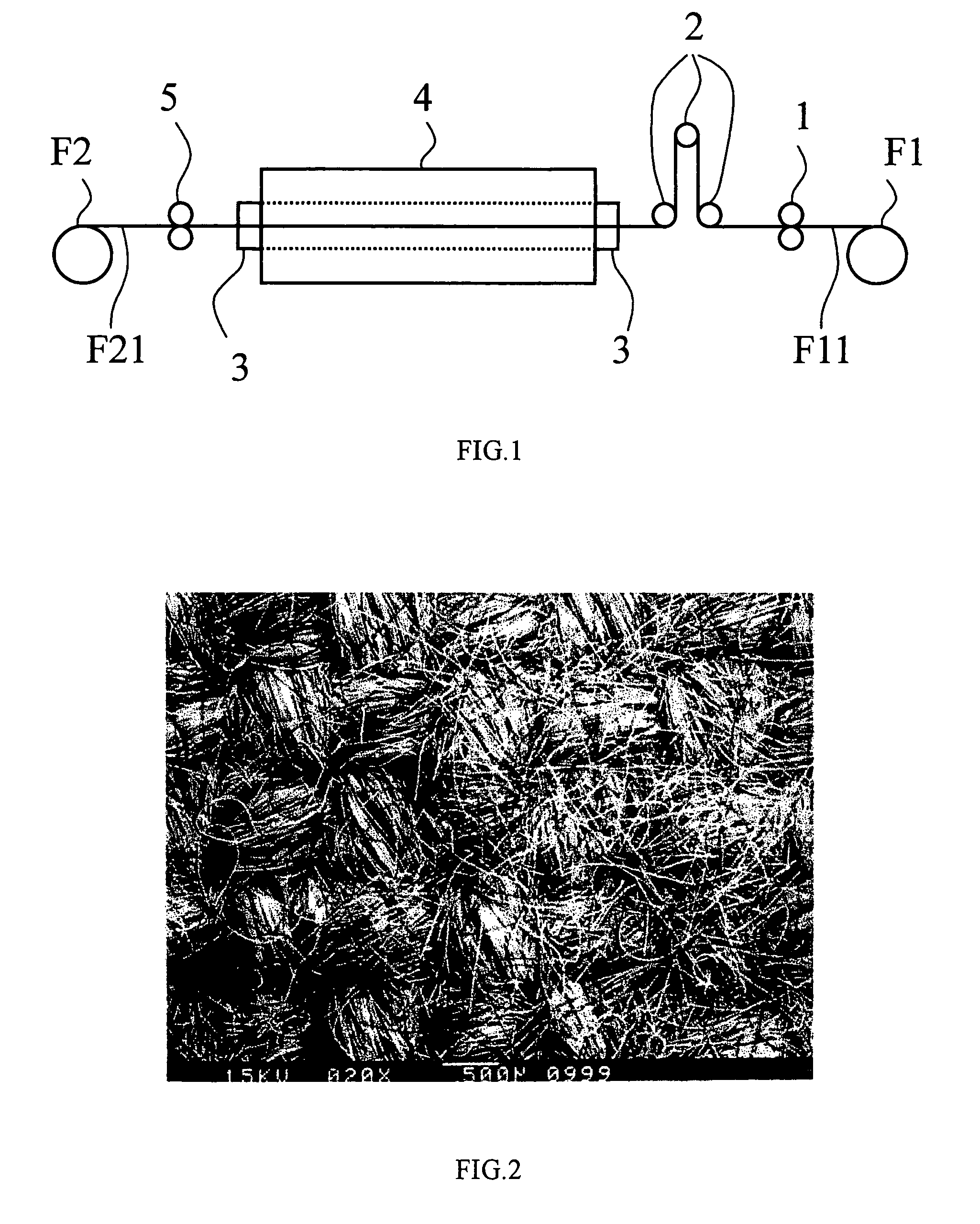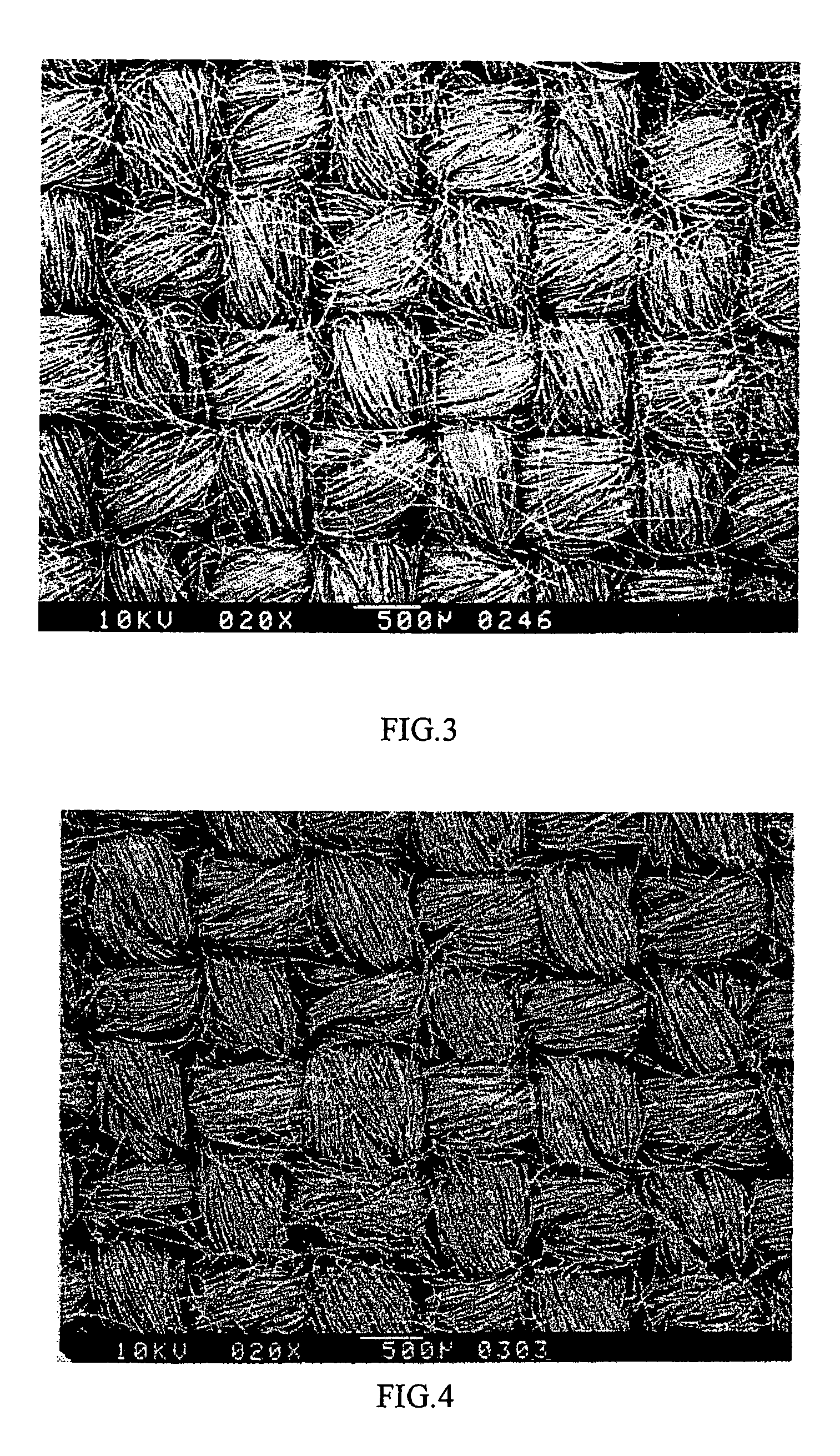Method for making carbon fabric and product thereof
a technology of carbon fabrics and fibers, applied in the field of carbon fabrics, can solve the problems of loose structure of carbon fabrics directly woven from carbon fibers, inability to directly weave carbon fibers into fabrics, and inability to shield magnetic waves directly. , to achieve the effect of high conductivity and high density
- Summary
- Abstract
- Description
- Claims
- Application Information
AI Technical Summary
Benefits of technology
Problems solved by technology
Method used
Image
Examples
example i to iv
[0021]Plain fabrics of oxidized fibers of polypropylene were used as raw fabrics, which had count 2 / 11.3 Nm, fabric density 27×24 (per inch), density 1.38 g / ml, carbon content 57 wt %, oxygen content 12 wt %, LOI (limiting oxygen index) 55%. FIG. 2 shows the structure of the raw fabrics when viewed through a microscope.
[0022]The prepared raw fabrics were then processed through the carbonization process lot by lot. The duration of the carbonization treatment is 10 minutes. The carbonization temperatures for Examples I to IV were 900° C., 1000° C., 1300° C., and 1500° C. respectively. During carbonization, helium was supplied and used as a protective gas, and at the same time the anterior-roller set 1 and the posterior roller set 5 were rotated at different speeds to control the shrinkage of the raw fabrics below 30%, and the tension wheel set 2 was controlled to stabilize the tension of the raw fabrics. FIG. 3 shows the microscopic structure of Example III.
example v
[0023]The carbon fabric obtained from the aforesaid Example II was used and sent to a high temperature oven where temperature was increased at 5° C. / min to 2500° C. and then maintained at 2500° C. for 2 minutes.
PUM
| Property | Measurement | Unit |
|---|---|---|
| frequency | aaaaa | aaaaa |
| electromagnetic wave shielding efficiency | aaaaa | aaaaa |
| density | aaaaa | aaaaa |
Abstract
Description
Claims
Application Information
 Login to View More
Login to View More - R&D
- Intellectual Property
- Life Sciences
- Materials
- Tech Scout
- Unparalleled Data Quality
- Higher Quality Content
- 60% Fewer Hallucinations
Browse by: Latest US Patents, China's latest patents, Technical Efficacy Thesaurus, Application Domain, Technology Topic, Popular Technical Reports.
© 2025 PatSnap. All rights reserved.Legal|Privacy policy|Modern Slavery Act Transparency Statement|Sitemap|About US| Contact US: help@patsnap.com



